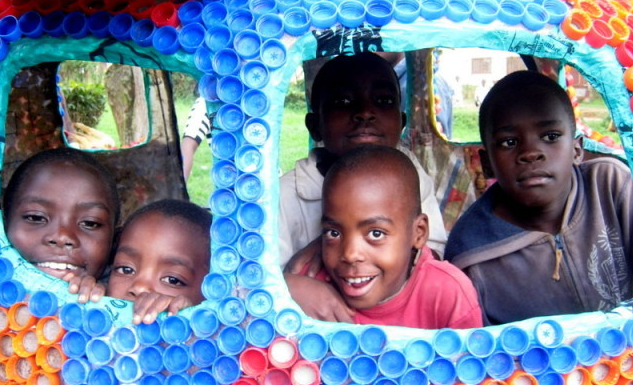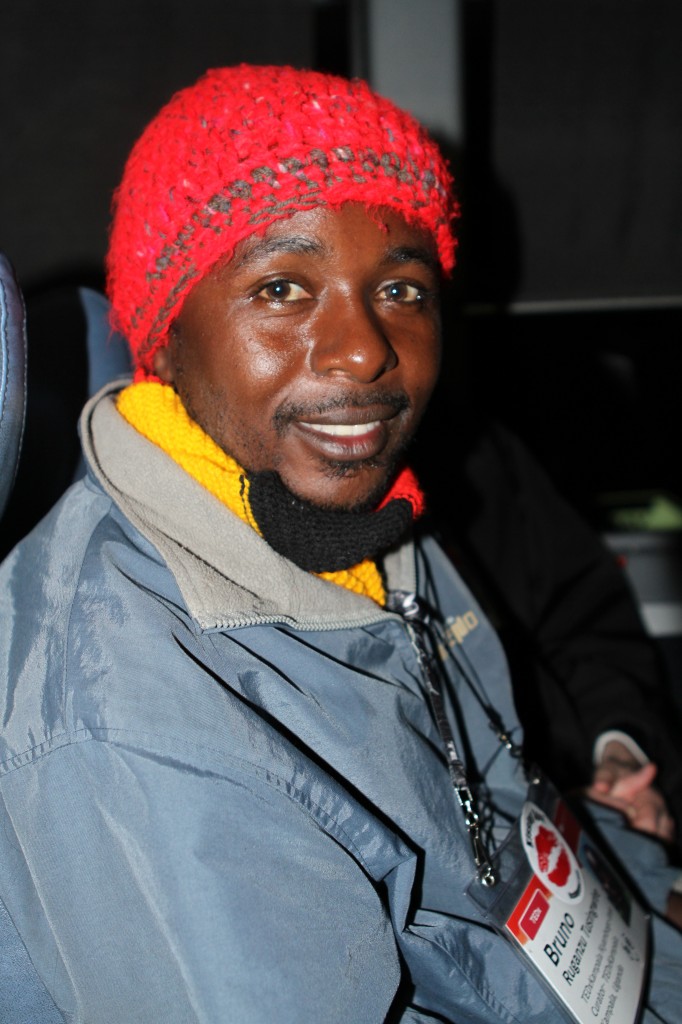While there may have been no shortage of media coverage on Uganda over the past year, thanks to the highly controversial KONY 2012 video, created by humanitarian organization Invisible Children. The United Nations (UN) reports that between July 2009 and February 2012, Kony’s group kidnapped at least 591 children.
I haven’t been there in over twenty years (I was there at the time just before they opened up access to seeing the gorillas) and none of our writers and contributors have been there either. And so, while humanitarian coverage of the country has been high, from a travel and culture perspective, it hasn’t been widely covered.
This post reflects this trend in that this is about a special Ugandan I met recently through the TED community.
An artist and community organizer, Ruganzu Bruno Tusingwire has a less sensationalistic and far more imaginative idea for how to engage and empower the children of his home country: Play. Tusingwire became the first City 2.0 Award recipient of 2012 at the TEDxSummit in Doha, Qatar, where he pitched his plan to turn thousands of plastic water bottles into an amusement park where kids growing up in the slums can play and learn.
Children in Uganda so deserve the physiological and emotional lift of having a good time. In addition to the well-known scourges of poverty and a lack of access to adequate education, a mysterious brain disorder dubbed “nodding disease” has afflicted at least 3,000 children in Northern Uganda as of late. The disease leaves children physically stunted and mentally disabled and experts still have no firm answer as to what causes it.
Being witness to this kind of suffering has led Tusingwire to rethink his approach to his calling: “I shifted from doing artwork to just hang on walls, having little influence on society, to doing art that solves community needs. It’s helped me realize my value to society.”
The seed for the amusement park was planted when Tusingwire got involved in eco-art as a student at Kyambogo University. He began meeting other local artists, and together, they made work out of a rampantly available and strikingly inexpensive material: garbage.
“Art is unifying,” Tusingwire explains. “We can use what is around us to create treasure, employment opportunities, and make the environment better. There is a wonderful world of possibilities before us.”
Tusingwire was the lead organizer of the first ever TEDxKampala, which focused on the ways in which local artists of all kinds could leverage recycled materials as content for their art.
It was a powerful gathering, strengthening the community of those already engaged in eco-art, and bringing new artists and environmentalists into the fold.
Artist Pauline Kael once said, “Trash has given us an appetite for art.” And art, in the hands of a visionary like Tusingwire, can give kids a new appetite for life.
Photo credits: first image from TheCity2.org and a shot I took on the bus in Palm Springs towards the end of TedActive this year. (2013).

Renee Blodgett is the founder of We Blog the World. The site combines the magic of an online culture and travel magazine with a global blog network and has contributors from every continent in the world. Having lived in 10 countries and explored nearly 80, she is an avid traveler, and a lover, observer and participant in cultural diversity.
She is also the CEO and founder of Magic Sauce Media, a new media services consultancy focused on viral marketing, social media, branding, events and PR. For over 20 years, she has helped companies from 12 countries get traction in the market. Known for her global and organic approach to product and corporate launches, Renee practices what she pitches and as an active user of social media, she helps clients navigate digital waters from around the world. Renee has been blogging for over 16 years and regularly writes on her personal blog Down the Avenue, Huffington Post, BlogHer, We Blog the World and other sites. She was ranked #12 Social Media Influencer by Forbes Magazine and is listed as a new media influencer and game changer on various sites and books on the new media revolution. In 2013, she was listed as the 6th most influential woman in social media by Forbes Magazine on a Top 20 List.
Her passion for art, storytelling and photography led to the launch of Magic Sauce Photography, which is a visual extension of her writing, the result of which has led to producing six photo books: Galapagos Islands, London, South Africa, Rome, Urbanization and Ecuador.
Renee is also the co-founder of Traveling Geeks, an initiative that brings entrepreneurs, thought leaders, bloggers, creators, curators and influencers to other countries to share and learn from peers, governments, corporations, and the general public in order to educate, share, evaluate, and promote innovative technologies.










